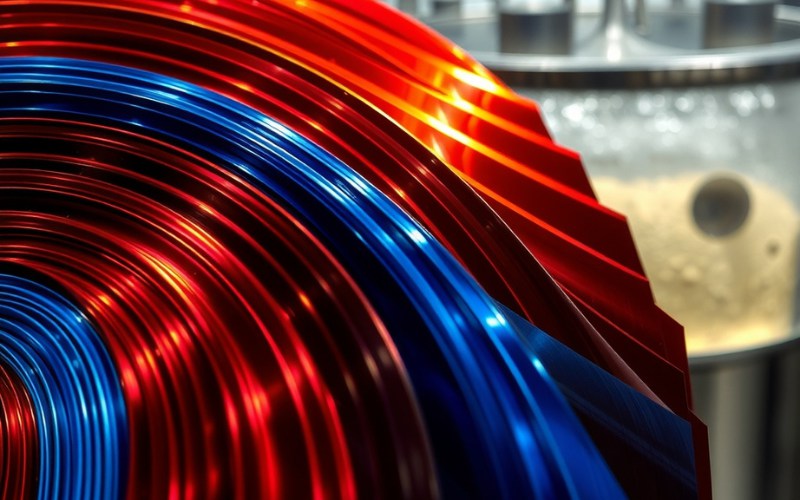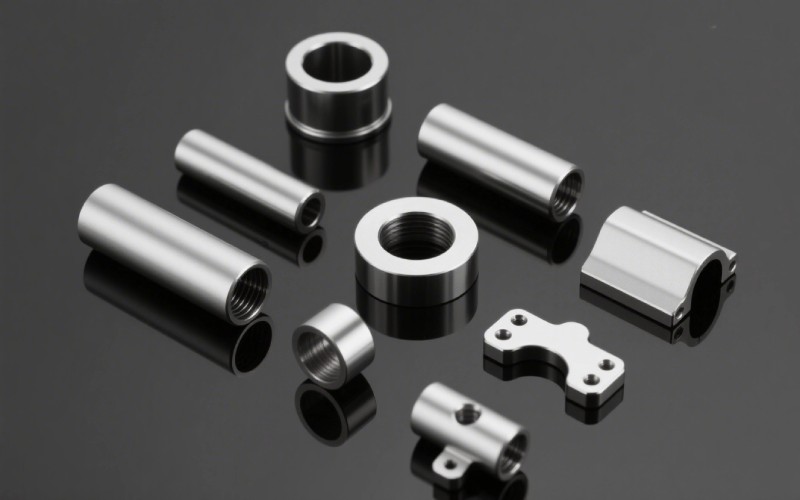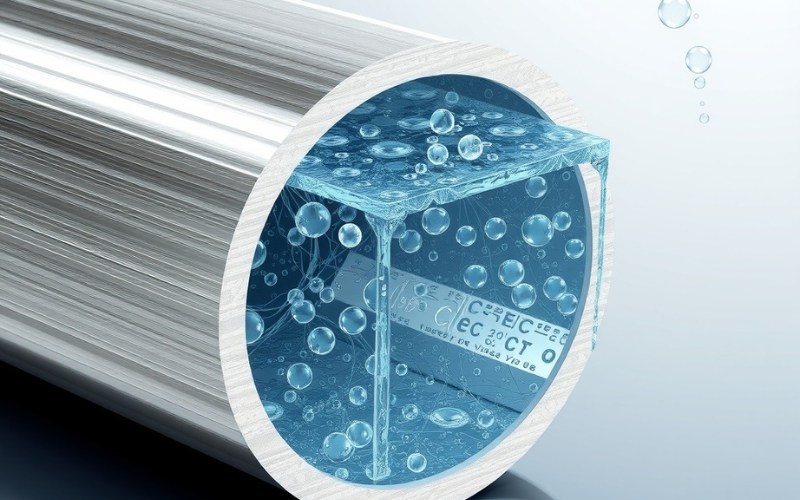Lassen Sie sich von Istar mit unserer Erfahrung und unserem Know-how beim Start Ihres Projekts unterstützen!
Laden Sie Ihre Designdateien und Produktionsanforderungen hoch und wir melden uns innerhalb von 30 Minuten bei Ihnen!

People want to know how to get a perfect and strong anodic coating every single time. It can feel like you are just guessing. But what if I told you there is a simple math trick that can get you very close? It is called the 720 rule. In this article, I am going to explain this helpful little equation. I will show you what the 720 rule is. I will also show you how to use it to anodize parts and feel sure about it. This guide will help you stop guessing. It will help you start getting the exact thickness you need. This can save you time and money. It also stops you from feeling annoyed.
Let’s begin with the simple facts. The 720 rule is a simple math rule used in aluminum anodizing. Its main purpose is to help you figure out the time required to make a layer of anodic oxide with a certain thickness. This is for an aluminum part. You can think of it as a recipe you can count on. Instead of just wishing for a good result, you can use this rule to get very close to what you want. The 720 rule is used by many people in the business for a good reason: it works.
The main idea of the rule is this. It takes 720 amp-minutes of current per square foot of aluminum surface to make an anodic oxide coating. This coating will have a thickness of 1 mil (that is 0.001 inches). This gives us a good place to start for any job to anodize something. It connects the amount of electricity we use with the real thickness of the protective oxide layer we are making. This simple connection is the secret to getting the same good results when you anodize.
When I was new to this, the anodization process seemed confusing. You put an aluminum part in a special liquid. Then you run an electrical current through it. You hope you get the right thickness. This way of guessing is slow. It also wastes materials. The 720 rule helps us make the whole thing easier. The reason we anodize is not just to change the metal’s color. It is about the careful creation of a hard, long-lasting oxide layer. This layer provides corrosion resistance, which helps protect the metal.
The thickness of this anodic layer is very important. A thin layer might not give enough protection to the part. A layer that is too thick might get cracks. It also might not take a dye the right way. We need a good way to predict the final thickness. This is where the 720 rule helps. It gives us a math-based way to control this important thing. It changes the skill of anodizing into more of a science. It gives us the power to calculate the time required to achieve a certain thickness.

The great thing about the 720 rule is that it’s very simple. It is an easy equation that anyone can use. The math problem looks like this:
Time (in minutes) = (720 x Desired Thickness in mils) / Current Density (in ASF)
Let’s look at what each part of this equation means. “Time” is the answer we want to find. It is the dwell time. This is how long the part has to be in the electrolyte liquid with the power on. The “Desired Thickness” is what we want to achieve, measured in mils (0.001 of an inch). The 720 is our special number that does not change. The “Current Density” is how much electrical current we are using on a certain amount of space.
This equation gives us a great tool to plan how we will anodize. We only need to know two things. We need to know the thickness we want and the current density our machine is using. With those, we can get a good estimate of the anodizing time. This simple calculation to estimate the process is used by anodizers everywhere. It helps them make parts that are the same every time.
Here is a simple chart to explain the parts of the equation:
| Part of the Math Problem | Was es bedeutet | An Example |
|---|---|---|
| Zeit | The amount of time needed to anodize the part, in minutes. | 30 minutes |
| 720 | The special number from the 720 rule. It is amp-minutes of current per square foot to build 1 mil of oxide. | 720 |
| Desired Thickness | The goal for the thickness of the anodic oxide, in mils. | 0,8 Mio. |
| Current Density | The amount of current per square foot, measured in Amps per Square Foot (ASF). | 12 ASF |
I cannot explain the 720 rule without talking about current density. It is the power behind the whole process. Current density is the amount of electrical current that is flowing for each piece of the surface on your part. We often measure it in Amps per Square Foot (ASF). Picture yourself watering a garden. If you use a small spray head, the water shoots out fast and hard. That is like a high current density. If you use a big sprinkler, the water is more spread out. That is like a low current density.
When we anodize, we need to control this with care. A higher current density will build the oxide thickness more quickly. But if it is too high, it can burn the part. It can also make a bad coating. Most Type II anodizing is done between 12 and 18 ASF. To use the 720 rule equation, you have to know your current density. You set this number on your machine. Using a constant current is very important to make the 720 rule work. The equation works with the idea that the current density stays the same during the job.
The current density has a direct effect on the rate of the anodizing reaction. A steady and known current density lets the 720 rule correctly predict how long the electrochemical job will take. The link between the time required and current density is the main key to getting the right oxide thickness.
Yes, of course! Let’s go through an example from the real world. Let’s say you are working on an aluminum part for a machine. You need to anodize it. You want a thickness of 0.6 mils. This will make it last a long time and protect it from damage. Your workshop usually runs its Type II sulfuric acid anodizing machine at a constant current density of 12 ASF.
Now, let’s use the 720 rule equation:
First, we do the multiplication of 720 by our goal for the thickness: 720 x 0.6 = 432
Next, we divide that number by our current density: 432 / 12 = 36
The answer is 36 minutes. So, the 720 rule tells us you would need to anodize the part for 36 minutes at 12 ASF. This is to get an oxide thickness of 0.6 mils. This easy equation just gave you a very good process time without any guessing. This is how you can use the 720 rule to calculate your anodizing time.
Now, I want to be clear about something. The 720 rule is a very good tool, but it is an estimation. This means it gives a good guess. It is not a perfect rule that never changes. The rule pretends that everything is 100% perfect. It acts like every small bit of electrical energy is used to build the anodic oxide layer. In the real world, this is not what happens. How well an anodizing liquid bath really works is often closer to 50-70%.
Some of the energy is lost and turns into heat. Some of the energy is used to melt a small bit of the oxide back into the acidic electrolyte solution. This happens more with some kinds of aluminum alloys. For instance, metal types like 2024 and 7075 have a lot of copper in them. These highly alloyed metals do not anodize as well as more pure aluminum. For these metals, the 720 rule may guess a time that is too short. You might need to use a correction number. You could try an “800 rule” or “900 rule,” based on what you have learned from working with a certain metal. The 720 rule is your first step, but it is not always the last word.
Besides the type of aluminum, many other things can change how well the 720 rule works. The whole process can be changed by what is around it. You can think of these as important things you need to manage. This will help you get the same results every time.
Here are some important things to watch:
All of these things can change how well the process to anodize works. A good anodizer watches these details very closely. They know that a steady process is the only way to make any equation or estimation work well.

The 720 rule is a great way to guess. So you might ask how to make it even better. One of the common changes experts use is called ramp compensation. When you begin the constant-current anodizing process, you do not get to the level you want right away, like 18 ASF. Instead, you slowly “ramp up” the power over a few minutes. This stops the part from burning. It also makes sure the coating starts in a good way.
During this time of ramping up, some oxide is still being made, but not at the full speed. The simple 720 rule equation does not think about this. To get a better answer, you can figure out the amount of oxide formed during the ramp. Then you can take that away from your goal. A normal thing to do is to add half of your ramp time to the final dwell time. This is the time the 720 rule gave you. For example, if your ramp is 6 minutes, you would add 3 more minutes to the total anodizing time. This small change for the oxide formed during the ramp makes your estimation much better.
Yes, for sure. The 720 rule is used the most often for Type II sulfuric acid anodizing. Type II is the kind of anodize you see on things you use every day. You can find it on electronics and on pots and pans. It gives a good mix of corrosion resistance and durability. It is also very good for adding color with a dye. The small holes in a Type II coating are just right for soaking up color.
The Type II process in a sulfuric acid electrolyte works in a way we can guess. This makes it a great match for the 720 rule. The rule helps you get the perfect thickness for adding a dye. This is often between 0.4 and 0.8 mils. This amount of control is needed to get a nice finish that lasts a long time. The 720 rule is not used as much for other types. These include chromic acid anodize (Type I) or hardcoat anodize (Type III). Those processes do not work the same way and have different goals. For a normal, high-quality Type II anodize, the 720 rule is the right tool to use.
From what I have seen, using the 720 rule is about going from just guessing to knowing what will happen. It is a basic and important tool for making sure the quality is good. It gives you a simple, fast, and good equation. You can use it to calculate one of the most important parts of the job. This is the time required to produce an anodic oxide thickness that you want. Instead of wasting parts by just trying things out, you can do it right the first time.
Using the 720 rule helps you make a process that you can repeat and count on. This means you can give high-quality parts to your customers again and again. It does not matter if you are doing this as a hobby at home or as a professional in a big aerospace workshop. This easy equation helps you control the thickness of your anodic coating. It is a very important thing to know for anyone who is serious about aluminum anodizing. It will help you simplify your work and make every part you anodize better.